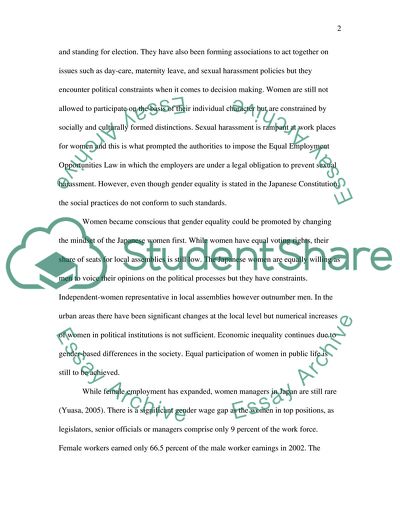Cite this document
(“Japanese views on Gender Essay Example | Topics and Well Written Essays - 1000 words”, n.d.)
Retrieved from https://studentshare.org/gender-sexual-studies/1556190-japanese-views-on-gender
Retrieved from https://studentshare.org/gender-sexual-studies/1556190-japanese-views-on-gender
(Japanese Views on Gender Essay Example | Topics and Well Written Essays - 1000 Words)
https://studentshare.org/gender-sexual-studies/1556190-japanese-views-on-gender.
https://studentshare.org/gender-sexual-studies/1556190-japanese-views-on-gender.
“Japanese Views on Gender Essay Example | Topics and Well Written Essays - 1000 Words”, n.d. https://studentshare.org/gender-sexual-studies/1556190-japanese-views-on-gender.


